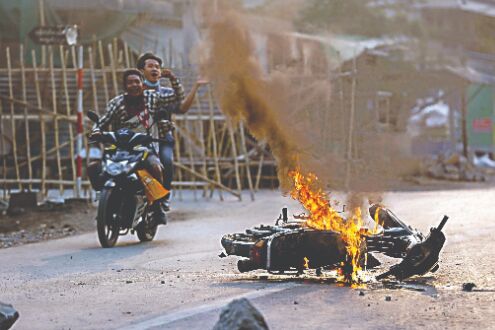Myanmar protest death toll surpasses 300

Yangon: The death toll for protesters confirmed killed in Myanmar since last month's military takeover has surpassed 300, a group that verifies details of deaths and arrests announced Friday.
Myanmar's Assistance Association for Political Prisoners said its tally of 320 dead includes only documented cases, with the actual number of casualties likely much higher.
It said 11 people were killed Thursday, when it also managed to verify 23 deaths that occurred previously.
The group also said that as of Thursday, 2,981 people had been arrested, charged or sentenced in the crackdown since the Feb. 1 coup that ousted the elected government of Aung San Suu Kyi. Most, including Suu Kyi and President Win Myint, remain detained.
The army's seizure of power halted the Southeast Asian nation's move toward democracy that began when Suu Kyi's party took office in 2016 for its first term, after more than five decades of military rule.
The movement against the junta and its takeover received a major boost Thursday when the United States and Britain announced tough sanctions against two military-owned conglomerates with vast holdings in many sectors.
The US Treasury Department said its action against Myanma Economic Holdings Public Company Limited and Myanmar Economic Corporation Limited targets the army's control of large parts of the country's economy, which is a vital financial lifeline for the military junta.
The sanctions against the two companies and their holdings block access to any property they control in the United States and effectively bars any US person or company from conducting any sort of business with them, including supplying them with funds or providing goods or services.
Myanmar's home-grown Civil Disobedience Movement against military rule is targeting the economy in order to make it difficult for the junta to govern. It has advocated work stoppages by state enterprise workers, bank closures and disinvestment by foreign companies.
Myanmar's economy is already battered by the COVID-19 pandemic, which surged there in the second half of last year.



